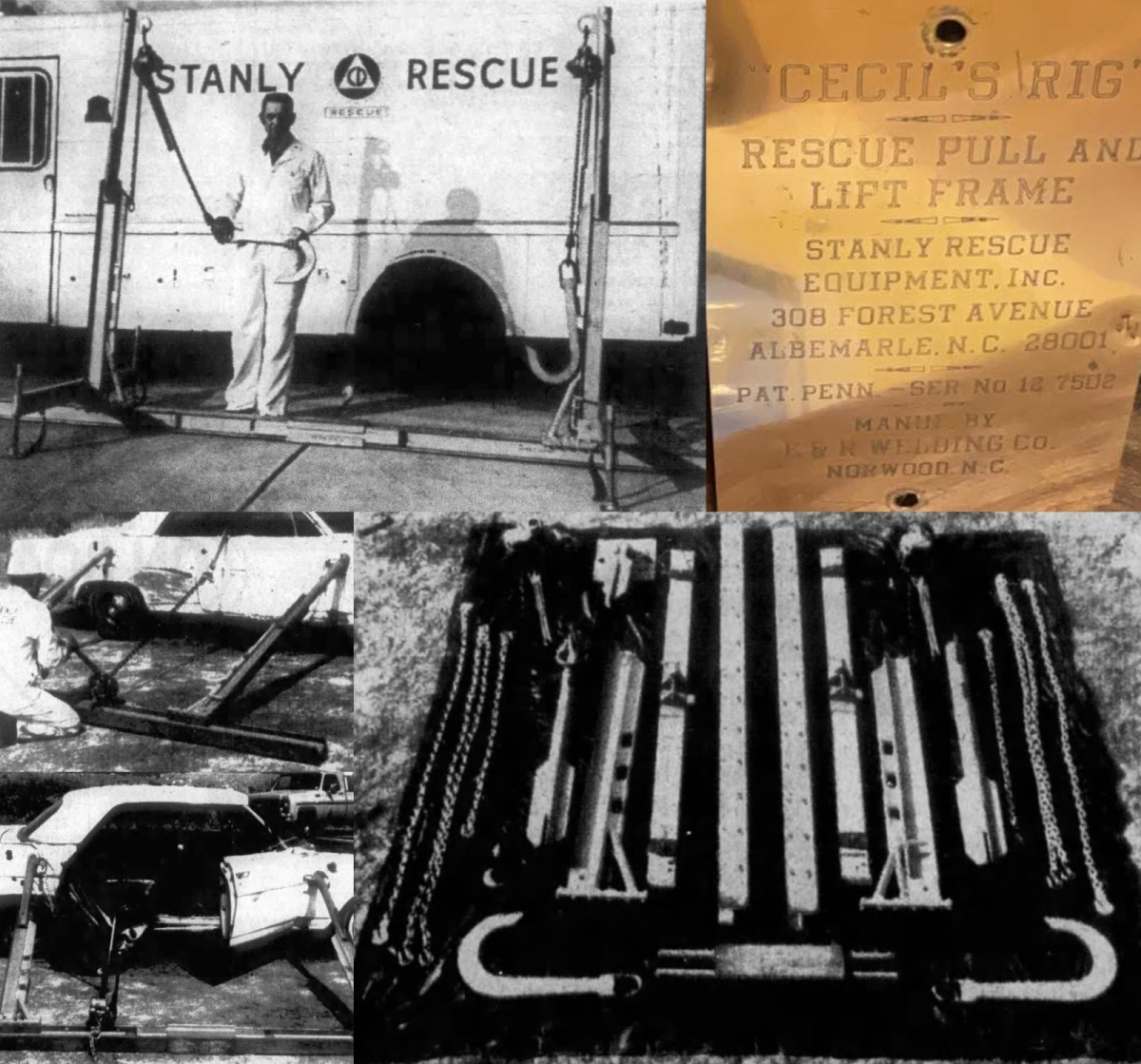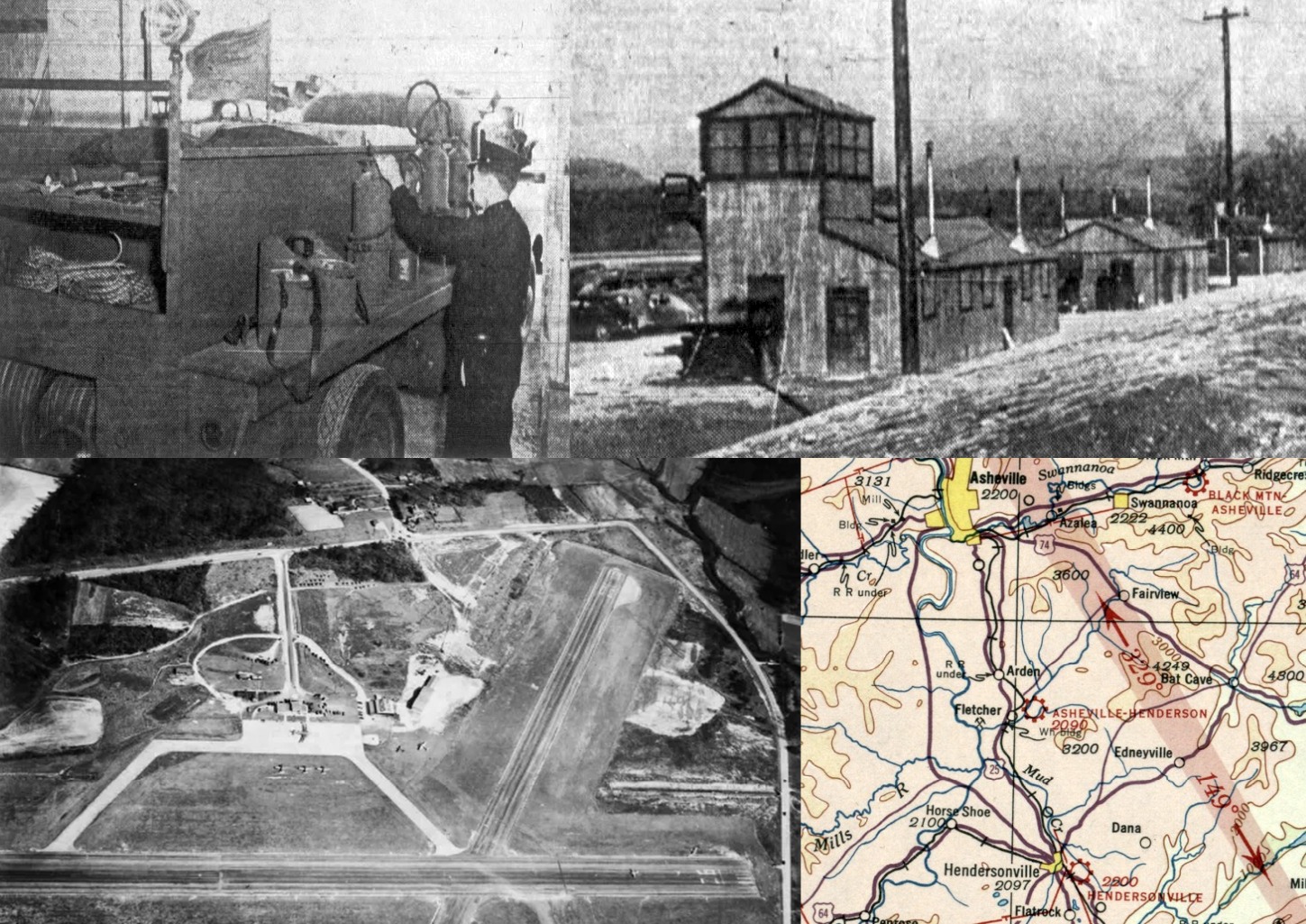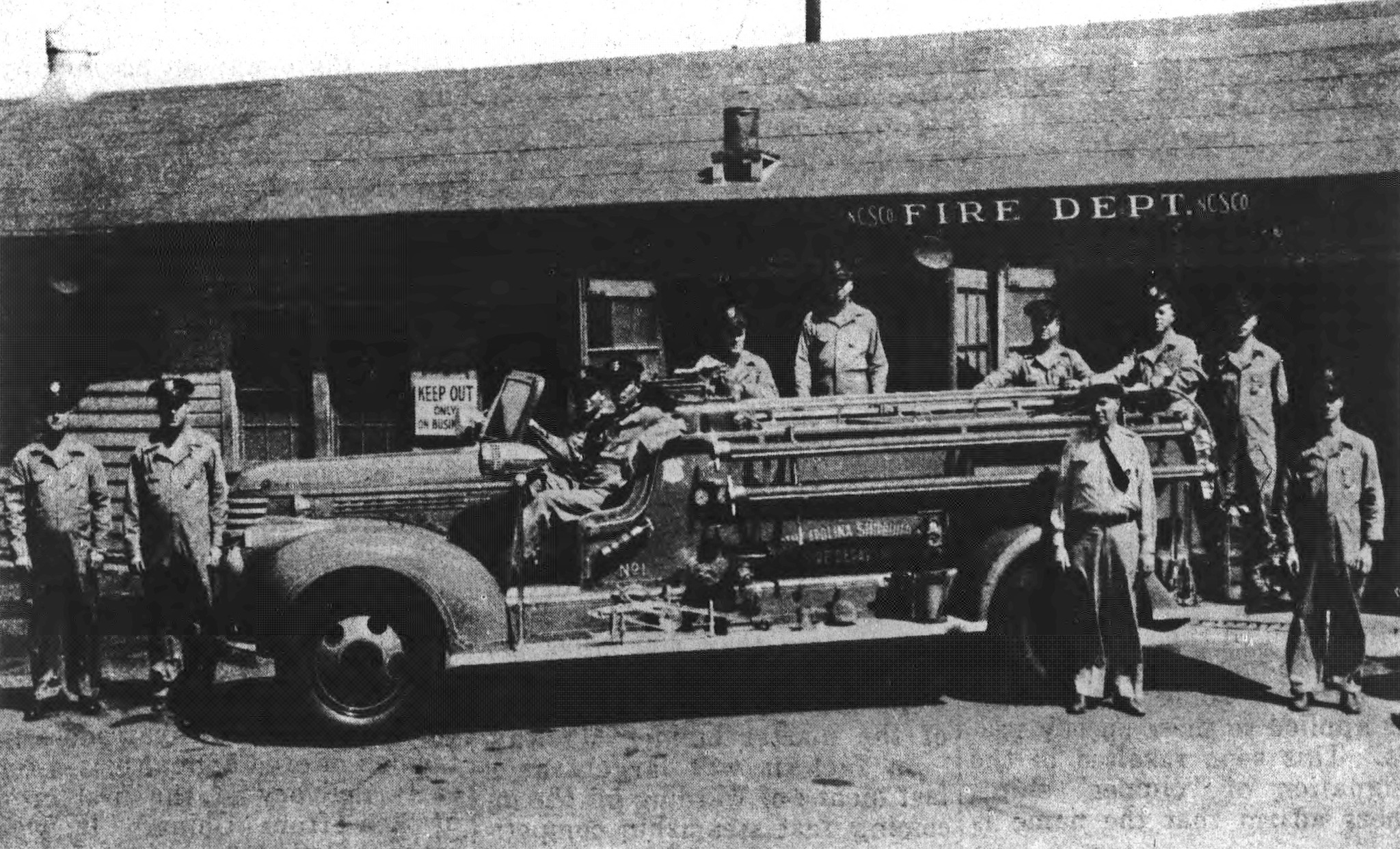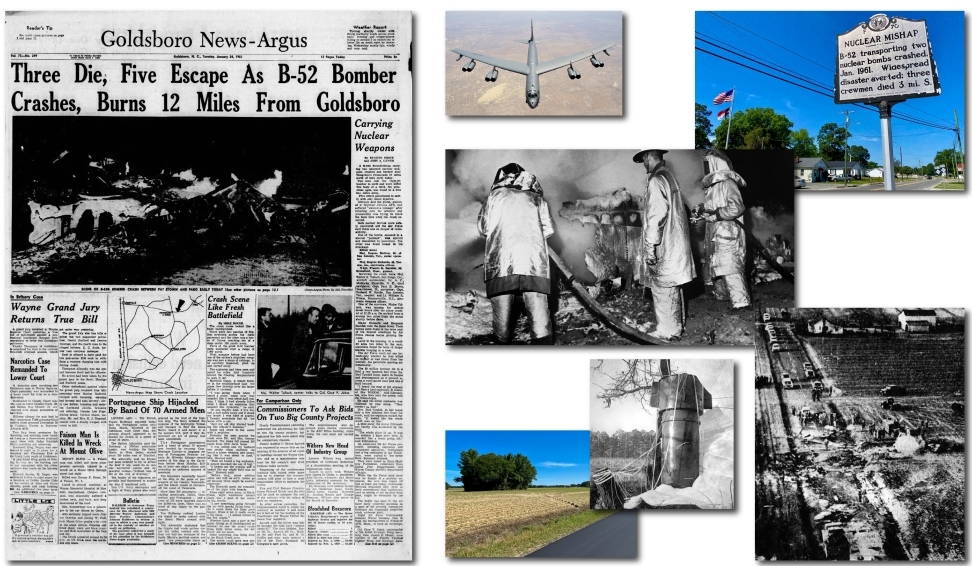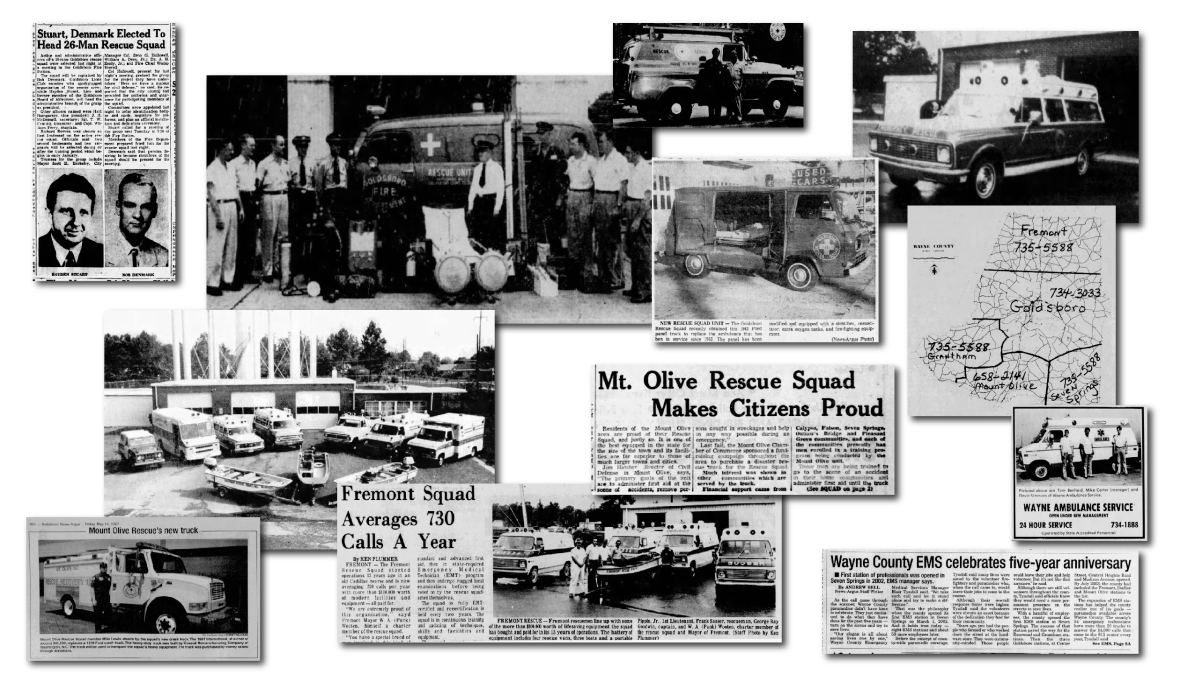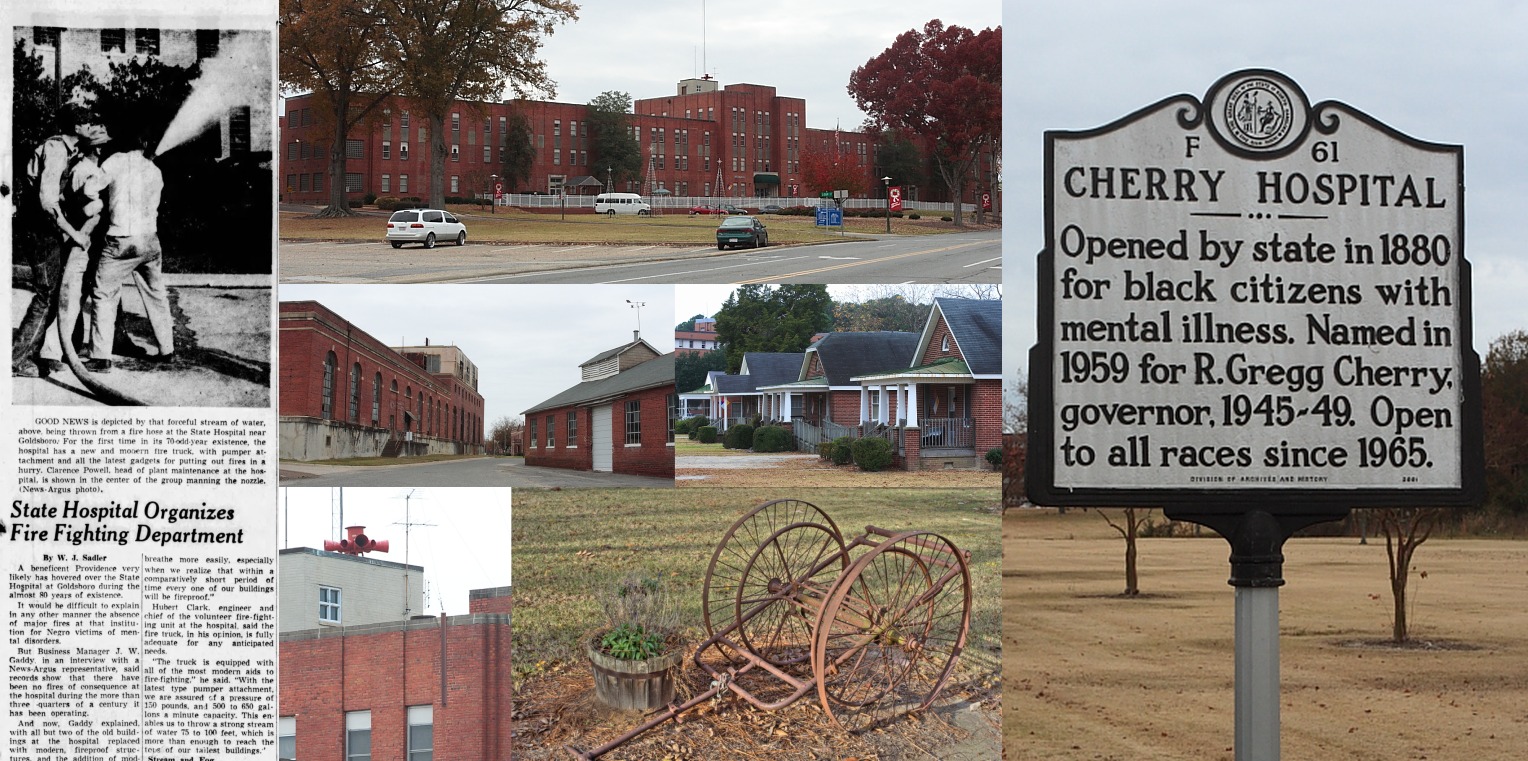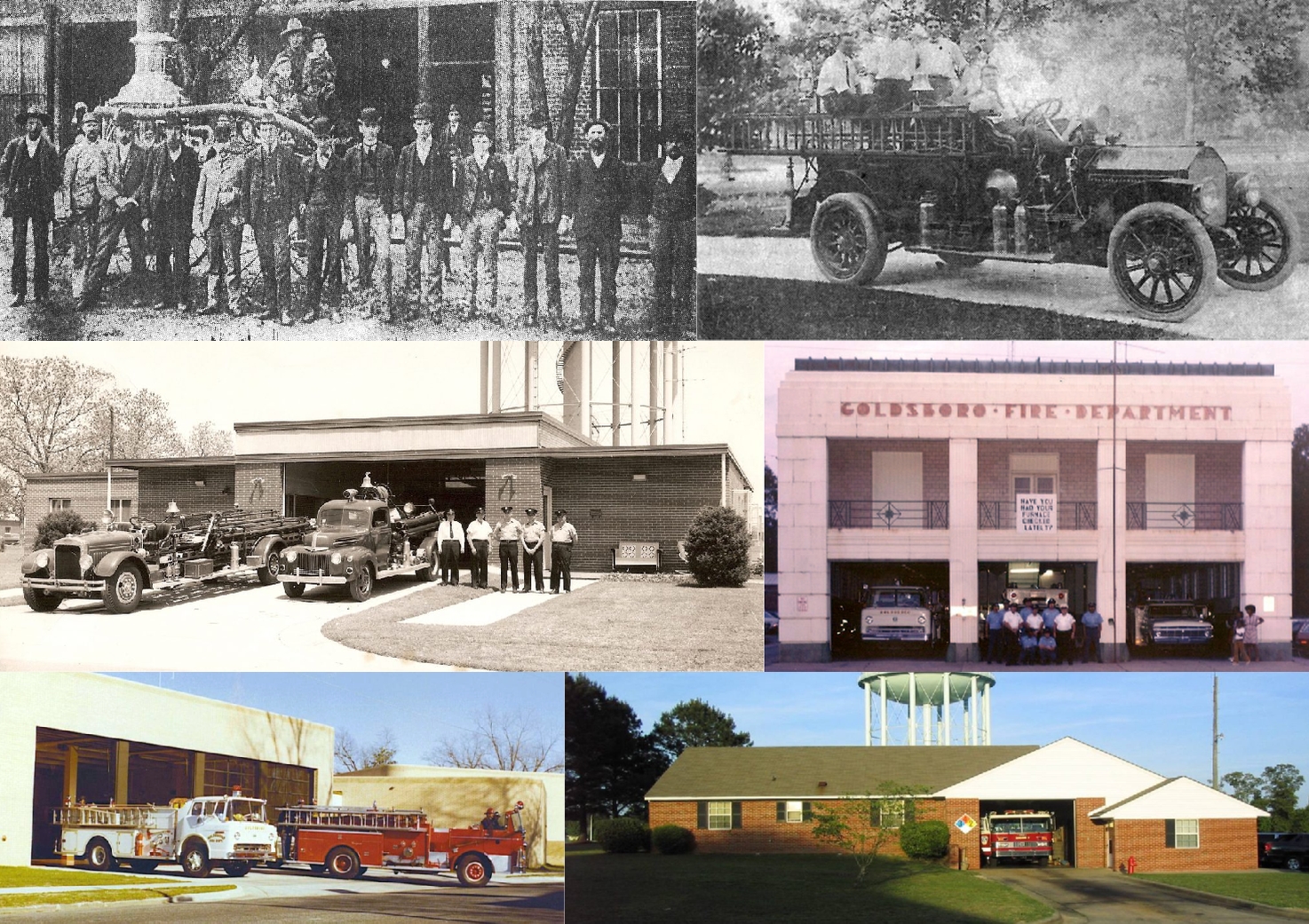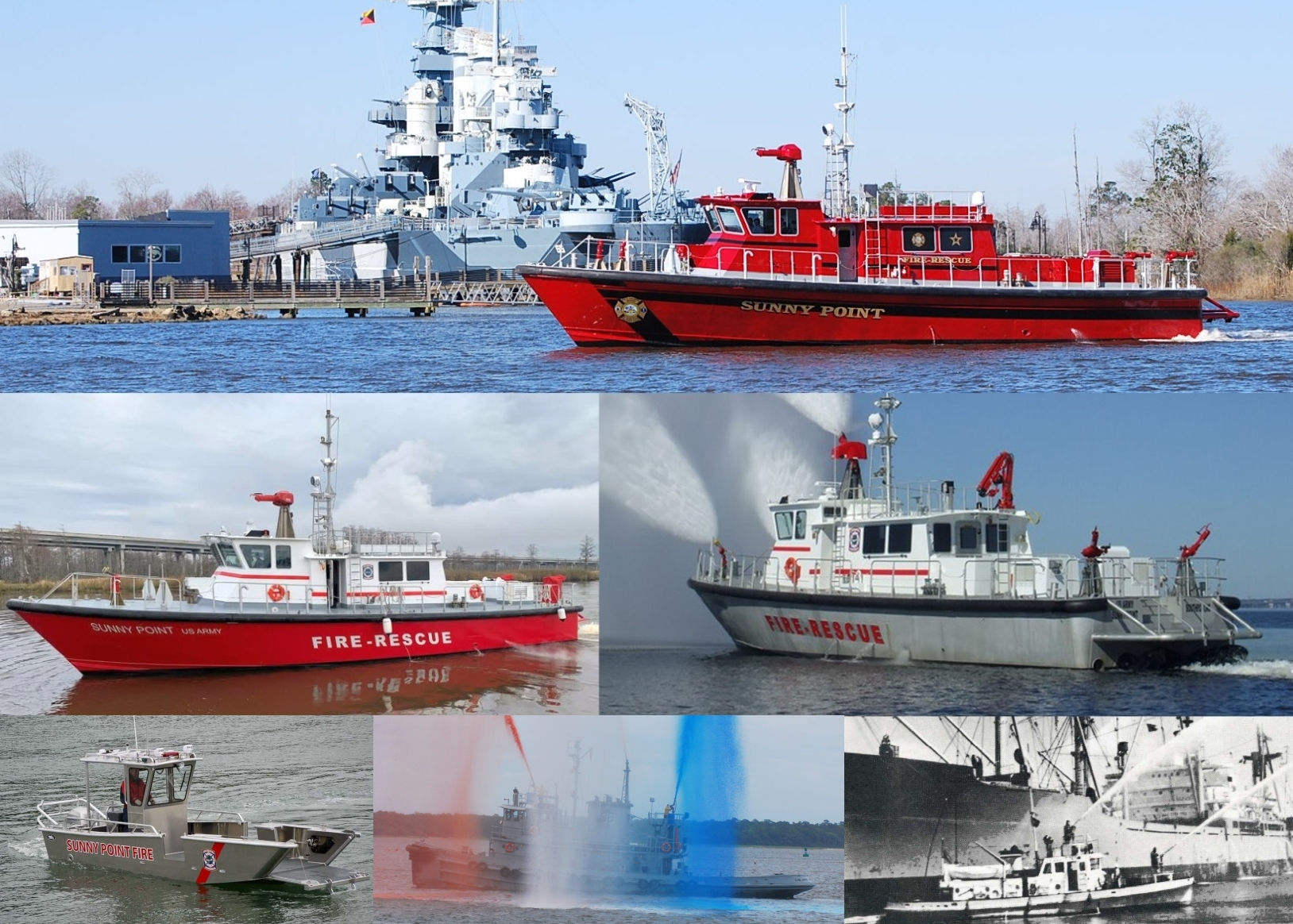
Photo credits: US Army 596th Transportation Brigade, Davis Diesel, Ray Hunt Design, Munson Boats, US Army, Hose & Nozzle Magazine.
Let’s look at the fire and rescue boats of Marine Ocean Terminal Sunny Point in Brunswick County. Three fireboats going back to the 1950s plus a small rescue boat in recent years. Were there others?
Current Fire Boat
2011 to present
Placed in service in September 2011 [Rocky Mount Telegram, 2/15/12], the terminal’s fire boat was built by Gladding-Hearn Shipbuilding in Somerset, MA. The 75-foot craft has a 3,750 GPM/150 PSI pump, powered by two 503 HP CAT engines. Separate 1600 HP CAT engines power the boat. Five monitors, including a remote-controlled deluge gun atop the wheelhouse. Jet propulsion. EMS-equipped cabin. Etc.
It was delivered with a knuckle-boom crane aft of the pilothouse on the bridge deck, but that might have been removed in recent years?
It’s had three sets of colors over the years. Early this year, it was repaint black over red. Top photo from this 596th Transportation Brigade Facebook posting in February 2025. It’s shown in white over red in a Davis Diesel photo from a Facebook posting in March 2021 It’s shown in white over grey in Ray Hunt Design photos from 2011.
See also this December 2011 story from Marine Link about the boat.
Small Rescue Boat
Their small rescue boat was built by Munson in [goes here]. It’s 24 feet long with an 8′ 6″ beam. Outfitted with a 48″ wide console T-top, 26″ wide side doors, 3″ tow post, motor guard/tow line guide, Whelen 17″ LED light bar, and two Go Light 2020 400,000 CP search lights with control pads.
Details and more pics on the builder’s web site.
The Valley Forge
Served TBD to 2011
The former fireboat was the firefighting tug Valley Forge LT-2096. Built in 1954, it was converted to a fire tug in the late 1990s, noted this Coastland Times story from May 2012. And which may refer to the rebuilt, listed below.
The 108-foot craft was rebuilt in 1997-2001 in Hythe, England. It upgraded from 4,000 GPM and a 1,200 HP main engine to 8,000 GPM plus 2,000 GPM of foam, and a 2,500 HP main engine, noted this USTCNS news release.
The tug was retired in September 2011. [Rocky Mount Telegram, 2/15/12] The tug was sold at government auction in February 2012 [ibid] and sold for $115,000 and purchased by the North Carolina Division of Marine Fisheries and subsequently stripped and sunk to help build an artificial reef off the coast of Hatteras Island on May 7, 2012. [Coastland Times, 5/23/21]
It’s pictured in a US Army photo from May 2010, see source article.
See also a photo from August 2011 in downtown Wilmington by Dave and Sara Matthews, as posted to Flickr.
Earlier Fire Boat
Served 1955 to TBD
Sunny Point military logistics center opened in 1955, after four years of construction. [Wiki] Reported a newspaper story on the October 29, 1955, dedication, the Transportation Corps provided a fleet of vehicles to the facility, including two fireboats. [N&O, 10/30/55]
One of those fireboats is likely pictured circa January 1958, on the cover of Hose & Nozzle magazine in January 1958. Details about the boat are TBD.
The accompanying Hose & Nozzle article noted that the terminal had both a fireboat and a tug for floating fire protection. Plus two pumpers and a tanker, a forestry bulldozer, and two firefighting rail cars with pumps and tanks. Plus an extensive water system with mains, pumps, hose cabinets, and monitor towers.
See a digital version of the issue linked from this landing page.
Other History
By July 1969, a feature in the Raleigh News and Observer about the facility noted that the terminal had two firefighting tugs. [N&O, 7/6/69]

